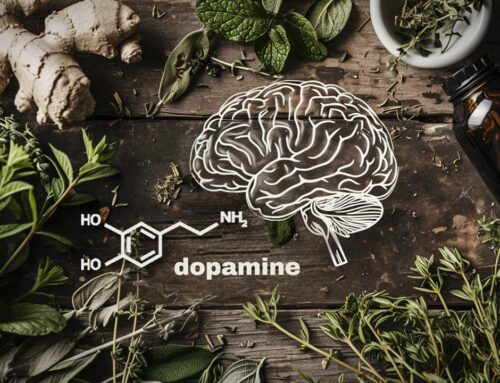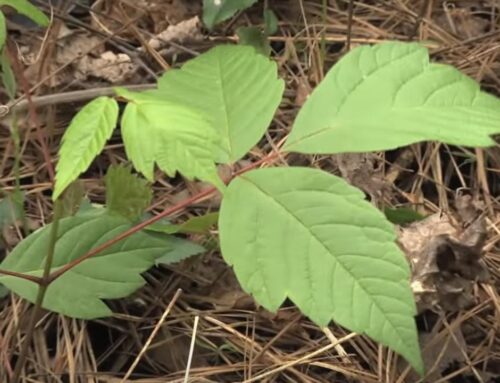Goldenrod, what is it?
Goldenrod is a common name for plants in the genus Solidago of the Asteraceae family. These are herbaceous perennial plants found primarily in North America, although some species are native to Europe and Asia. Here are some key characteristics and details about goldenrods:
- Appearance: Goldenrods are recognized for their bright yellow flower spikes. The plants range from short species only a few inches high to taller species that can reach several feet.
- Habitat: These plants are commonly found in meadows, prairies, roadsides, and other open areas. They tend to thrive in full sun and well-drained soil.
- Uses: Some species of goldenrod are used in traditional medicine, particularly by indigenous peoples of North America. The plants have been used for a variety of ailments, from kidney stones to colds.
- Misconceptions: Goldenrod is often mistakenly blamed for causing hay fever allergies. However, it’s typically the ragweed plant (which blooms around the same time and is wind-pollinated) that’s the culprit. Goldenrod is insect-pollinated, so its pollen is not usually airborne in significant quantities.
- Ecological Importance: Goldenrods play a critical role in late summer and fall ecosystems, providing nectar for pollinators such as bees and butterflies.
- Cultivation: Some gardeners and landscapers incorporate goldenrod into their designs because of its vibrant color and ability to attract beneficial insects.
- Varieties: There are over 100 species of Solidago, offering a range of sizes and growth habits. Some of the more well-known species include Solidago canadensis (Canada goldenrod) and Solidago virgaurea (European goldenrod).
What is Goldenrod Used For?
Goldenrod, a plant that flashes vibrant hues of gold across fields and meadows, isn’t just a pretty face in the plant kingdom. As you settle into this article, you’ll discover the myriad uses of goldenrod – from historical applications in traditional medicine to its vital role in today’s ecology. If you’ve ever wondered why this plant stands out beyond its brilliant color, you’re about to embark on a delightful learning journey. Are you ready to dive deep into the golden world of goldenrod?
Table of Contents:
- Historical Uses of Goldenrod
- Goldenrod in Traditional Medicine
- Goldenrod in Modern Times
- Ecological Importance
- Goldenrod in Gardens and Landscapes
- Frequently Asked Questions
- Final Thoughts
- Sources
Historical Uses of Goldenrod
Imagine a time when modern medicine was a distant dream. People turned to the natural world for remedies. Goldenrod was one such plant that ancient cultures held in high esteem. Native American tribes, for instance, viewed it as a multipurpose plant, using it for everything from wound healing to rituals. And it wasn’t just a North American phenomenon; European settlers quickly recognized its potential and incorporated it into their herbal arsenals. But why was it so valued? Let’s explore.
Goldenrod in Traditional Medicine
The world of traditional medicine is vast, often merging the boundaries between myth, folklore, and empirical observations. Goldenrod, with its radiant spires, has long been an integral part of this intricate tapestry, boasting a reputation that spans continents and cultures. But what made this plant a go-to remedy for our ancestors? Let’s delve into the golden chronicles of traditional medicine.

Native American Healing
Native American tribes held an intimate knowledge of the land and its bounties. For them, goldenrod was not just a plant; it was medicine. Different tribes utilized it in varied ways:
- Wound Healing: The fresh leaves were often crushed into a poultice and applied to wounds, believed to expedite healing and reduce the risk of infection. The concept seems ancient, yet think about it – isn’t it incredible how nature offers first-aid solutions right at our feet?
- Respiratory Relief: Some tribes believed in goldenrod’s potential to alleviate symptoms of colds, coughs, and respiratory issues. They would brew teas or decoctions, providing relief with every warm sip. Imagine a chilly night, wrapped in a blanket, sipping on goldenrod tea – sounds comforting, doesn’t it?
- Digestive Aid: Upset stomach? Goldenrod to the rescue. Infusions made from its roots or flowers were consumed to ease digestive discomforts. It was almost like nature’s antacid.
European Adoptions
When European settlers landed on North American shores, they didn’t just encounter unfamiliar landscapes; they were introduced to a whole new pharmacopeia. Goldenrod, with its prominence in Native American medicine, didn’t go unnoticed.
- Anti-inflammatory Properties: Europeans, particularly those practicing traditional herbal medicine, began to see goldenrod as a potential anti-inflammatory agent. They employed it to treat conditions like arthritis and gout. Imagine the relief of a person from medieval times, finding solace in a plant-based remedy for their swollen joints.
- Diuretic Uses: Another common use was as a diuretic. It was believed that goldenrod could help flush out kidney stones and urinary tract infections, making it a prized herb in many old-world households.
Ancient Myths and Symbolisms
Beyond tangible remedies, goldenrod carried symbolic meanings. In some cultures, it was seen as a protective charm, warding off negative energies. Others believed it could bring good fortune. Remember, in traditional societies, the line between medicine and magic was often blurred. So, next time you see a goldenrod, think beyond its vibrant hue. Could it be a guardian of ancient secrets?
Goldenrod in Modern Times
Goldenrod, with its historical tapestry woven richly through the ages, is not a relic of the past. It continues to thrive, find relevance, and establish its significance in contemporary contexts. In modern times, the plant is not just confined to wild meadows and traditional folklore; it interfaces with science, industry, and even urban aesthetics. But how exactly does this age-old plant fit into the puzzle of our fast-paced, technology-driven world? Let’s navigate through the golden avenues of today.
Scientific Research and Phytotherapy
As the world increasingly turns to nature for answers to medical challenges, goldenrod has found itself under the scientific microscope.
- Anti-inflammatory and Antioxidant: Recent research has illuminated goldenrod’s potential anti-inflammatory and antioxidant properties. These studies hint at its capacity to combat oxidative stress, making it a subject of interest in managing conditions like arthritis and other inflammatory disorders. Could goldenrod be the next super herb in our pharmacological arsenal?
- Allergy Misconception: Contrary to popular belief, goldenrod isn’t the culprit behind hay fever symptoms. Science has clarified that ragweed, blooming around the same time, is the real mischief-maker. This revelation has enabled people to view goldenrod in a new light, appreciating its benefits without misplaced apprehension.
Sustainable Industries and Craftsmanship
Modern times bring a resurgence in sustainable practices, and goldenrod has found its niche here too.
- Natural Dyes: With the fashion industry leaning towards eco-friendly and sustainable options, goldenrod’s potential as a natural dye has been explored. Its vibrant yellow can color fabrics in hues that echo nature, making it a favored choice for artisans and eco-conscious designers.
- Herbal Products: From teas to essential oils, goldenrod’s derivatives grace the shelves of health stores and organic markets. Consumers seeking natural wellness options often turn to products infused with goldenrod extracts.
Urban Landscaping and Ecotourism
The modern city dweller, amidst concrete jungles, often yearns for touches of nature.
- Ecological Gardens: Landscape architects and urban planners incorporate goldenrod into city parks, rooftops, and community gardens. Its resilience, coupled with its ecological benefits for pollinators, makes it a desirable choice for urban green spaces.
- Ecotourism Spots: Meadows and preserves boasting goldenrod blooms have become spots for ecotourism. Nature enthusiasts flock to such sites, binoculars in hand, hoping to catch a glimpse of butterflies, bees, and birds drawn to the golden spectacle.
Ecological Importance
The beauty of nature often lies in its intricate connections, where even the seemingly most inconspicuous elements play pivotal roles in the grand tapestry of life. Goldenrod, while dazzlingly obvious with its vibrant hues, is more than just a pretty face in the ecological arena. It’s a powerhouse, playing a myriad of roles that are paramount for the well-being of numerous species and the environment as a whole. But what makes goldenrod such an ecological marvel? Let’s dive into this captivating narrative.
A Banquet for Pollinators
As seasons transition, especially moving into late summer and early fall, many flowering plants begin to wane. But goldenrod? It’s just getting started.
- Feeding the Bees: For honeybees and various wild bees, goldenrod is like the last grand feast before winter sets in. The nectar fuels their activities, while the pollen collected is vital for the next generation of bees.
- Butterflies and Moths: These fluttering beauties, especially those prepping for migration like the monarch butterfly, rely heavily on goldenrod. It provides the much-needed energy for their long journeys or to get through the colder months.
Isn’t it poetic how such radiant flowers assist in the life journeys of these winged wonders?
Shelter and Reproduction
Beyond food, goldenrod serves as a haven for numerous creatures.
- Nesting Grounds: Birds often use the thickets of goldenrod as nesting grounds, hiding their young from predators amidst the dense foliage.
- Host to Beneficial Insects: Various insects lay their eggs on goldenrod, knowing the larvae will have immediate access to food upon hatching. This includes several species of beetles and flies that control pests detrimental to agriculture.
A single goldenrod plant can be an entire universe for these critters, don’t you think?
Soil and Water Conservation
Goldenrod’s utility isn’t limited to fauna; it plays a significant role in maintaining the health of the land itself.
- Erosion Control: Their expansive root systems hold the soil together, preventing erosion, especially in areas prone to water runoff. This not only conserves the soil but ensures water sources remain unpolluted.
- Enhancing Soil Fertility: Goldenrod, when it decays, enriches the soil by returning essential nutrients. This assists in creating a fertile ground for other plants to thrive.
Biodiversity and Resilience
Goldenrod’s presence often indicates a healthy ecosystem.
- Indicator Species: In many areas, goldenrod is seen as an indicator species, meaning its presence (or absence) can give ecologists insights into the health of an ecosystem.
- Climate Resilience: Goldenrod is adaptable. It can thrive in various conditions, from droughts to floods. As climate patterns become increasingly unpredictable, plants like goldenrod may be key to ensuring ecological stability.
Goldenrod in Gardens and Landscapes
Goldenrod, with its brilliant yellow spires, isn’t just a wild meadow’s crown jewel; it’s also a gem in the world of landscaping and garden design. When people envision gardens, they often think of roses, lilies, or tulips. But what about the unassuming goldenrod? Its striking presence, coupled with its ecological benefits, makes it a sought-after choice for modern gardeners and landscape architects. Let’s embark on a journey to discover how this vibrant plant can transform our gardens and urban landscapes.

Vibrant Aesthetics
Gardening isn’t just about nurturing plants; it’s an art form, where colors, shapes, and textures weave together to create a living tapestry.
- Color Pop: Goldenrod’s radiant yellow can make any garden corner come alive. It contrasts beautifully with purples, blues, and deep greens, offering a visually striking palette for garden enthusiasts.
- Seasonal Brilliance: As many plants start retreating with the approach of fall, goldenrod bursts forth in all its glory, ensuring the garden remains vibrant even as the days grow shorter.
Companion Planting
Goldenrod isn’t just a solitary player; it thrives in company and can enhance the well-being of neighboring plants.
- Natural Pest Repellant: Certain varieties of goldenrod attract beneficial insects that keep pests at bay, reducing the need for chemical pesticides. It’s nature’s very own pest control system!
- Supporting Biodiversity: By planting goldenrod alongside other native plants, gardeners can create microhabitats that attract a diverse range of fauna, from pollinators to birds.
Diverse Varieties
Goldenrod isn’t a one-size-fits-all; there’s a myriad of species and varieties, each with its unique charm.
- Size and Form: From compact varieties that are perfect for small garden spaces to tall, waving varieties that can form a garden’s backdrop, there’s a goldenrod for every need.
- Hybrid Varieties: Modern horticulture has birthed hybrid goldenrod varieties, some of which are tailored for specific landscape needs or aesthetic preferences.
Water-Smart Landscaping
In an age where water conservation is vital, goldenrod offers a solution.
- Drought Tolerance: Many goldenrod species are resilient and can thrive in conditions where water is scarce. They’re perfect for xeriscaping or gardens designed to minimize water use.
Urban Spaces and Community Areas
Goldenrod’s utility extends beyond personal gardens.
- Urban Greening: Landscape architects often incorporate goldenrod into city parks, roundabouts, and even sidewalk planters. It’s a touch of wilderness in the heart of concrete jungles.
- Educational Spaces: Schools and community centers are recognizing the ecological importance of goldenrod. By integrating it into their landscapes, they provide learning opportunities about native plants and ecosystems.
Frequently Asked Questions
Final Thoughts
Goldenrod, with its radiant yellow blooms, is more than a visual treat. It’s a testament to nature’s brilliance. A plant that bridges history, tradition, modern applications, and ecological balance. The major takeaway? Nature, in its myriad forms, offers treasures, and goldenrod is one shimmering example. As you look at goldenrod, see beyond its color – envision its legacy and continued potential.
Sources
- “The Uses and Benefits of Goldenrod.” Herbal Academy.
- Walker, L. (2020). “The Ecological Importance of Goldenrod.” Nature Today.
- Smith, J. (2018). “Goldenrod in Traditional Cultures.” Ancient Herbal Remedies.







Leave A Comment